Abstract
L1210 leukemia was transplanted serially in CDF1 mice treated with 5-(3,3-dimethyl-1-triazeno)imidazole-4-carboxamide (DIC, NSC 45388). After four different lines (C lines) had been treated for several generations, a marked increase in survival time of untreated mice was observed. In contrast, mice treated with DIC or immunosuppressed with cyclophosphamide succumbed earlier with generalized leukemia. Furthermore, a C line showed unusually high sensitivity to chemotherapeutic treatment with 1,3 bis(2-chloroethyl)-1-nitrosourea. The data suggest that C lines acquired strong antigenicity for CDF1 and DBA/2 hosts. DIC treatment may have selected highly antigenic variants or induced somatic mutations resulting in the appearance of strong new transplantation antigen(s).
Full text
PDF
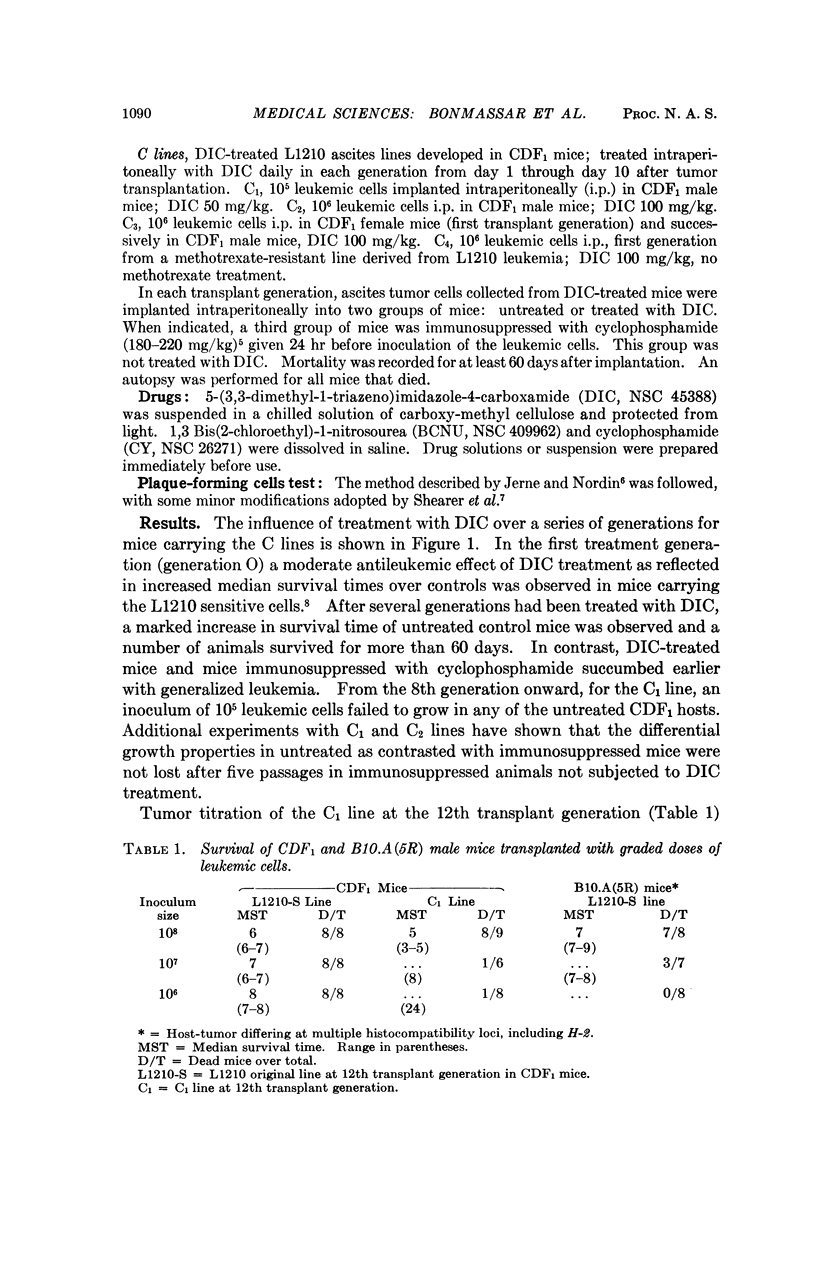
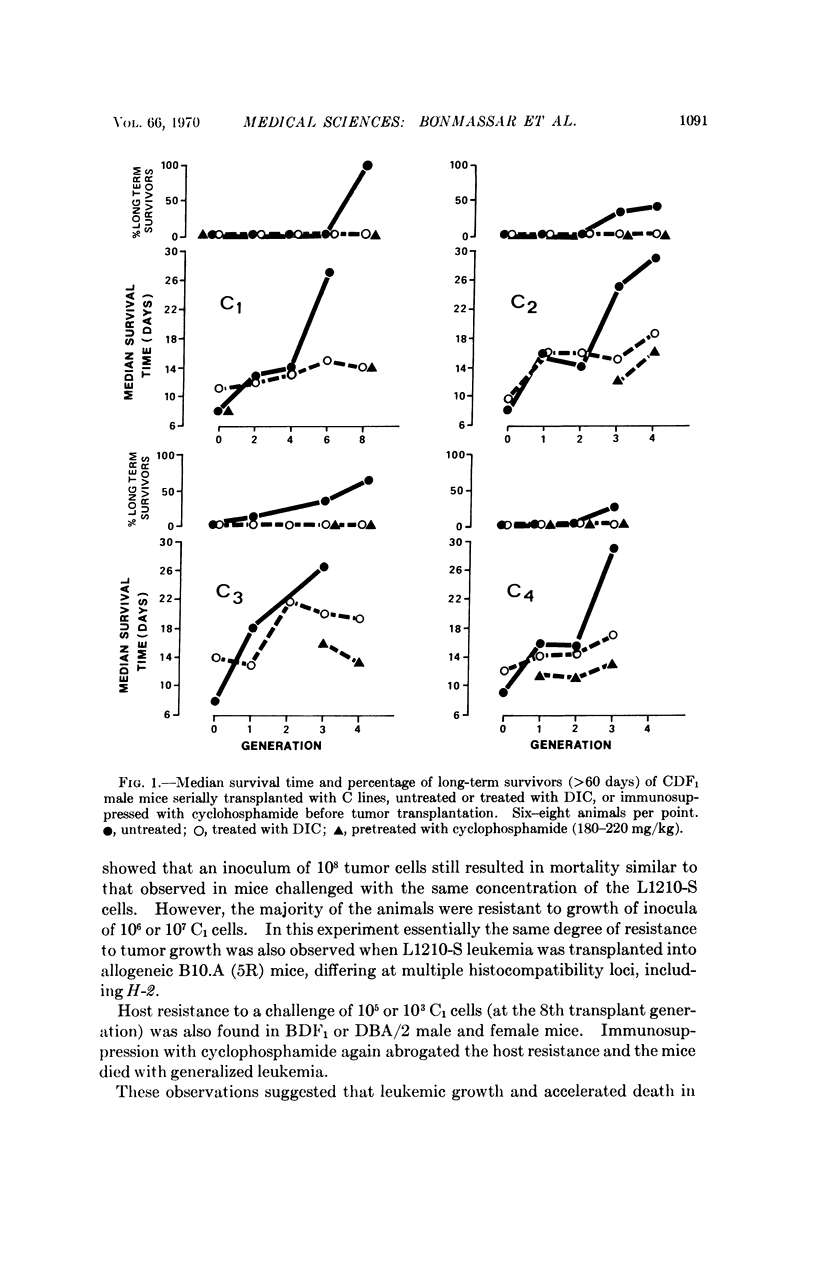
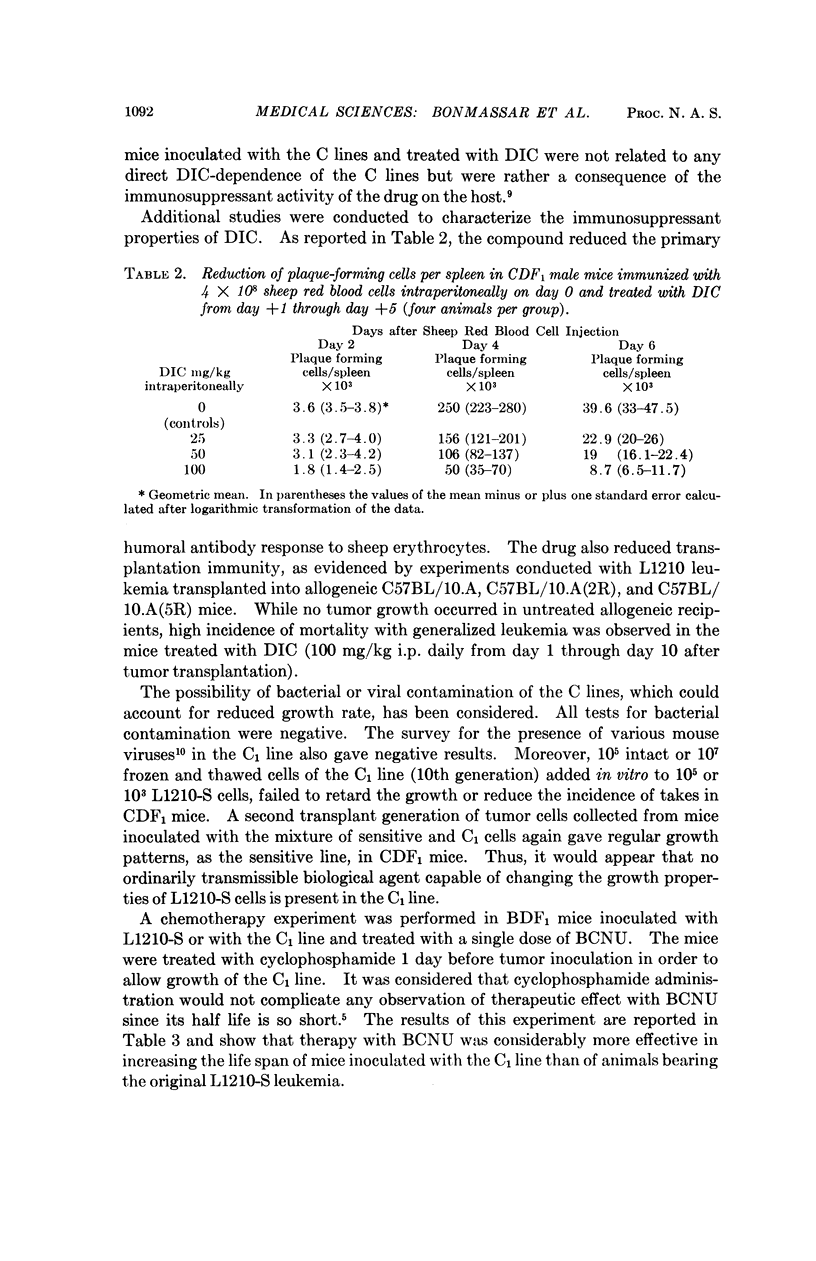
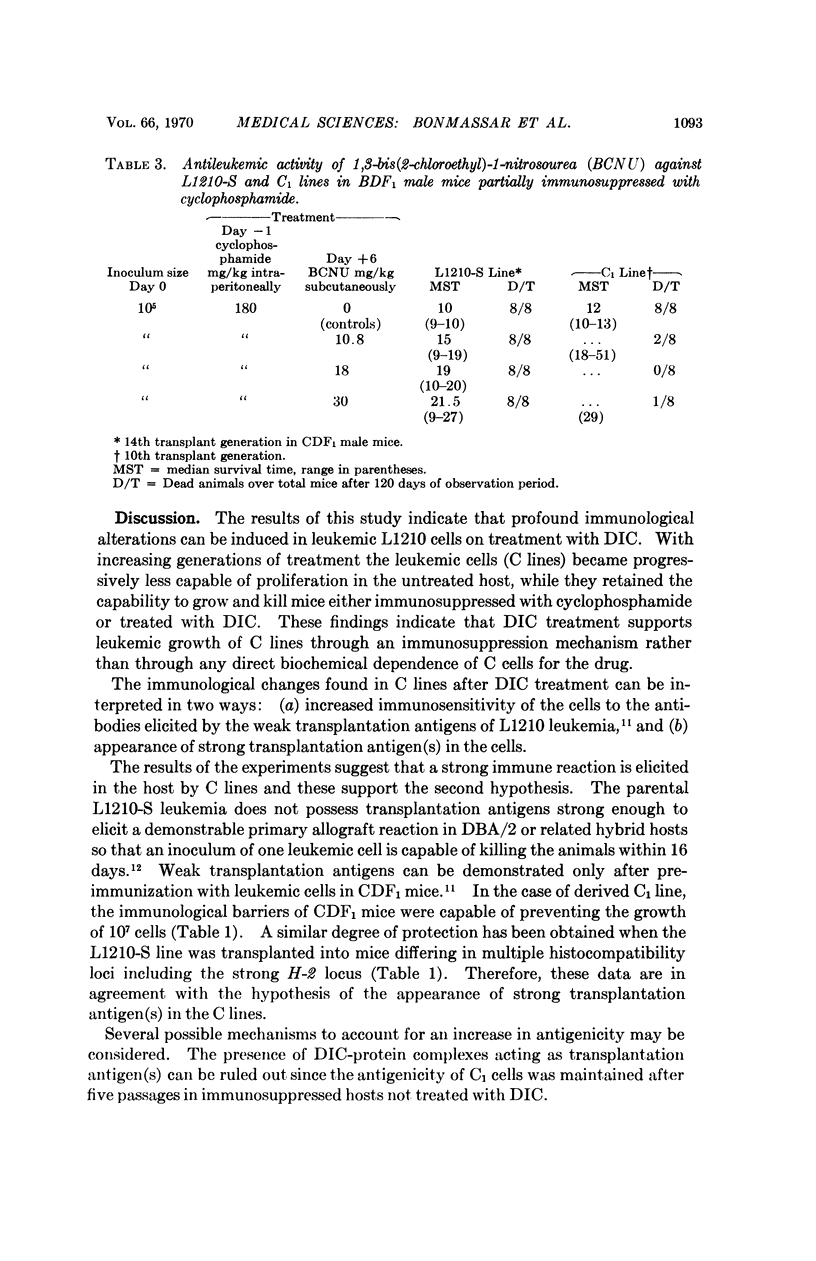
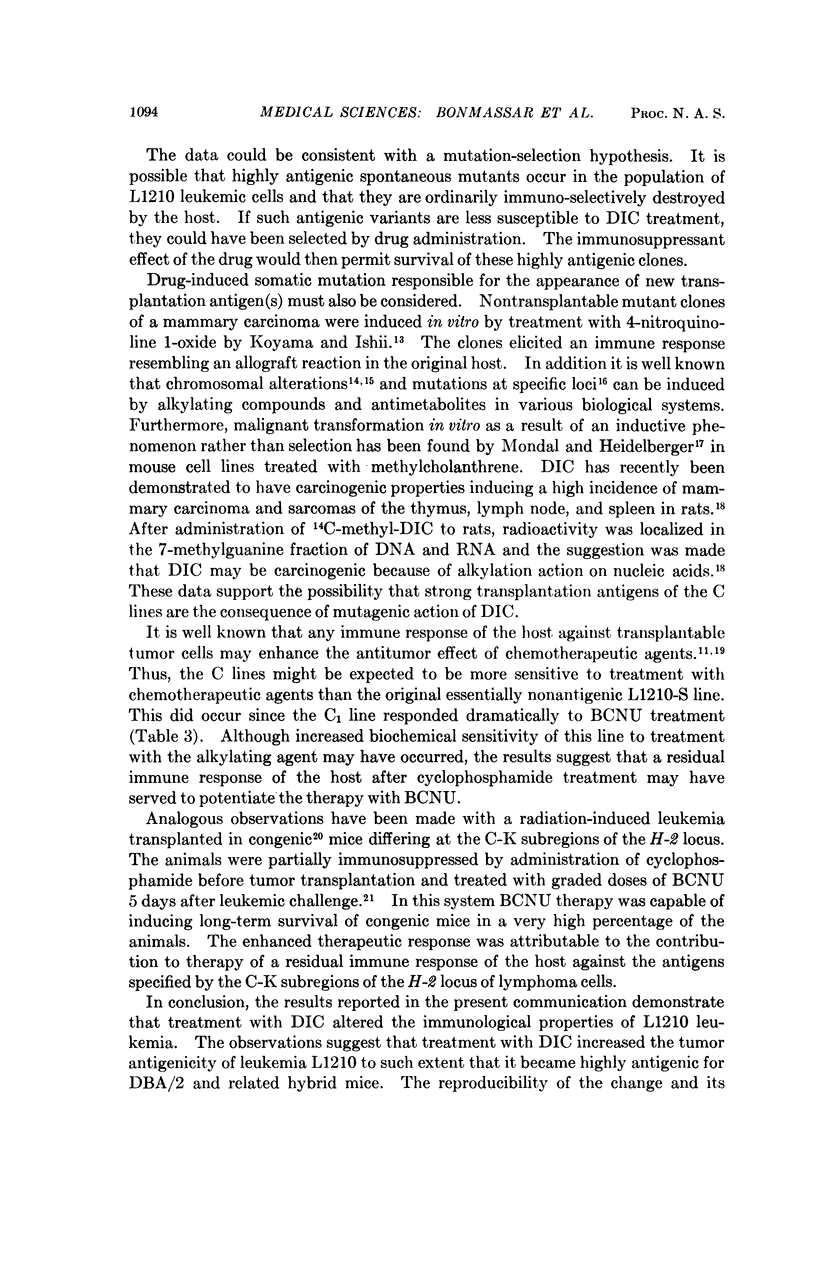
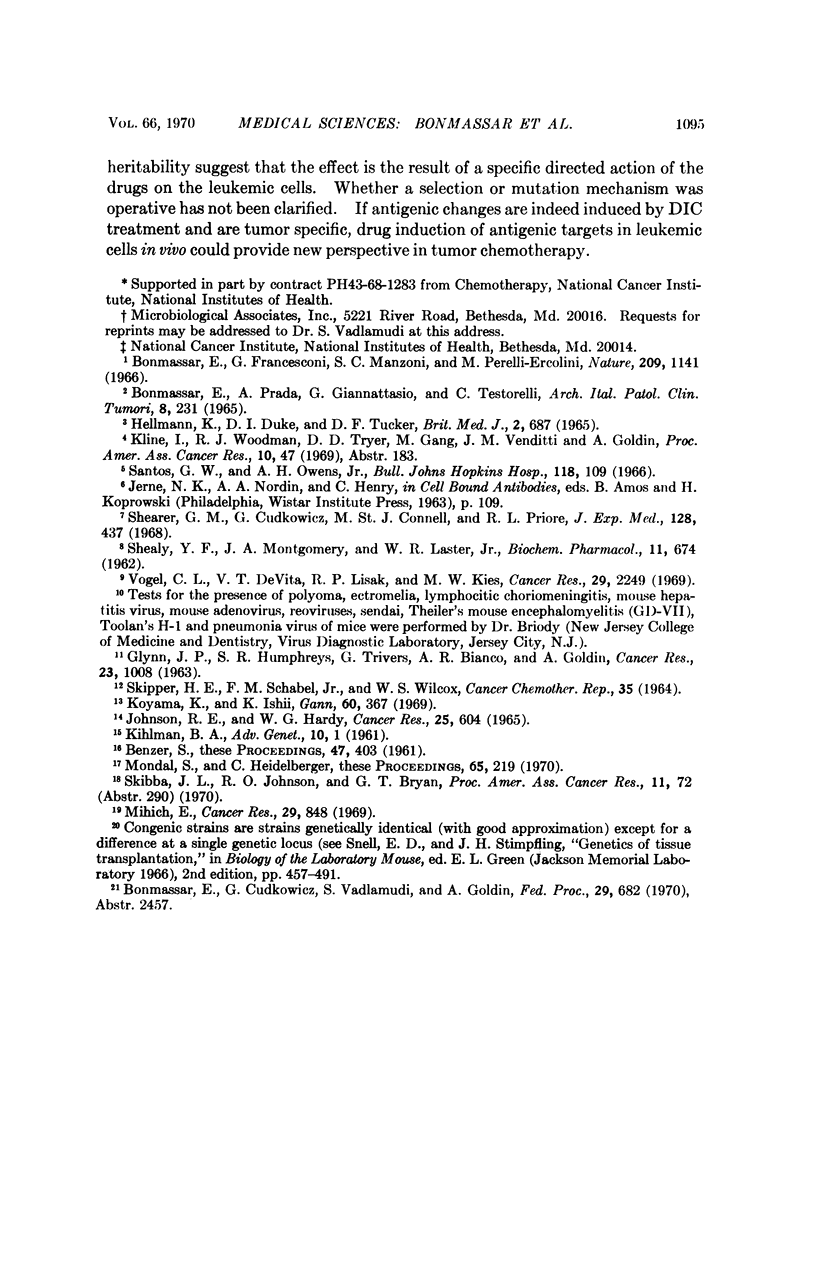
Selected References
These references are in PubMed. This may not be the complete list of references from this article.
- Benzer S. ON THE TOPOGRAPHY OF THE GENETIC FINE STRUCTURE. Proc Natl Acad Sci U S A. 1961 Mar;47(3):403–415. doi: 10.1073/pnas.47.3.403. [DOI] [PMC free article] [PubMed] [Google Scholar]
- Bonmassar E., Francesconi G., Manzoni S. C., Perelli-Ercolini M. Chemical deletion of histocompatibility antigens--homograft survival of rat skin treated with "Urethan" in vitro. Nature. 1966 Mar 12;209(5028):1141–1142. doi: 10.1038/2091141a0. [DOI] [PubMed] [Google Scholar]
- GLYNN J. P., HUMPHREYS S. R., TRIVERS G., BIANCO A. R., GOLDIN A. STUDIES ON IMMUNITY TO LEUKEMIA L1210 IN MICE. Cancer Res. 1963 Aug;23:1008–1015. [PubMed] [Google Scholar]
- HELLMANN K., DUKE D. I., TUCKER D. F. PROLONGATION OF SKIN HOMOGRAFT SURVIVAL BY THALIDOMIDE. Br Med J. 1965 Sep 18;2(5463):687–689. doi: 10.1136/bmj.2.5463.687. [DOI] [PMC free article] [PubMed] [Google Scholar]
- JOHNSON R. E., HARDY W. G. CHEMOTHERAPEUTIC EFFECTS ON MAMMALIAN TUMOR CELLS. II. BIOLOGIC AND CHROMOSOMAL INSTABILITY OF A CYCLOPHOSPHAMIDE-TREATED MURINE LEUKEMIA. Cancer Res. 1965 Jun;25:604–608. [PubMed] [Google Scholar]
- KIHLMAN B. A. Biochemical aspects of chromosome breakage. Adv Genet. 1961;10:1–59. doi: 10.1016/s0065-2660(08)60115-7. [DOI] [PubMed] [Google Scholar]
- Koyama K., Ishii K. Induction of non-transplantable mutant clones from an ascites tumor. Gan. 1969 Aug;60(4):367–372. [PubMed] [Google Scholar]
- Mihich E. Combined effects of chemotherapy and immunity against leukemia L1210 in DBA-2 mice. Cancer Res. 1969 Apr;29(4):848–854. [PubMed] [Google Scholar]
- Mondal S., Heidelberger C. In vitro malignant transformation by methylcholanthrene of the progeny of single cells derived from C3H mouse prostate. Proc Natl Acad Sci U S A. 1970 Jan;65(1):219–225. doi: 10.1073/pnas.65.1.219. [DOI] [PMC free article] [PubMed] [Google Scholar]
- SHEALY Y. F., MONTGOMERY J. A., LASTER W. R., Jr Antitumor activity of triazenoimidazoles. Biochem Pharmacol. 1962 Jul;11:674–676. doi: 10.1016/0006-2952(62)90130-2. [DOI] [PubMed] [Google Scholar]
- Shearer G. M., Cudkowicz G., Connell M. S., Priore R. L. Cellular differentiation of the immune system of mice. I. Separate splenic antigen-sensitive units for different types of anti-sheep antibody-forming cells. J Exp Med. 1968 Sep 1;128(3):437–457. doi: 10.1084/jem.128.3.437. [DOI] [PMC free article] [PubMed] [Google Scholar]
- Vogel C. L., De Vita V. T., Lisak R. P., Kies M. W. Suppression of experimental allergic encephalomyelitis by NSC 82196, a new imidazole carboxamide derivative. Cancer Res. 1969 Dec;29(12):2249–2253. [PubMed] [Google Scholar]


